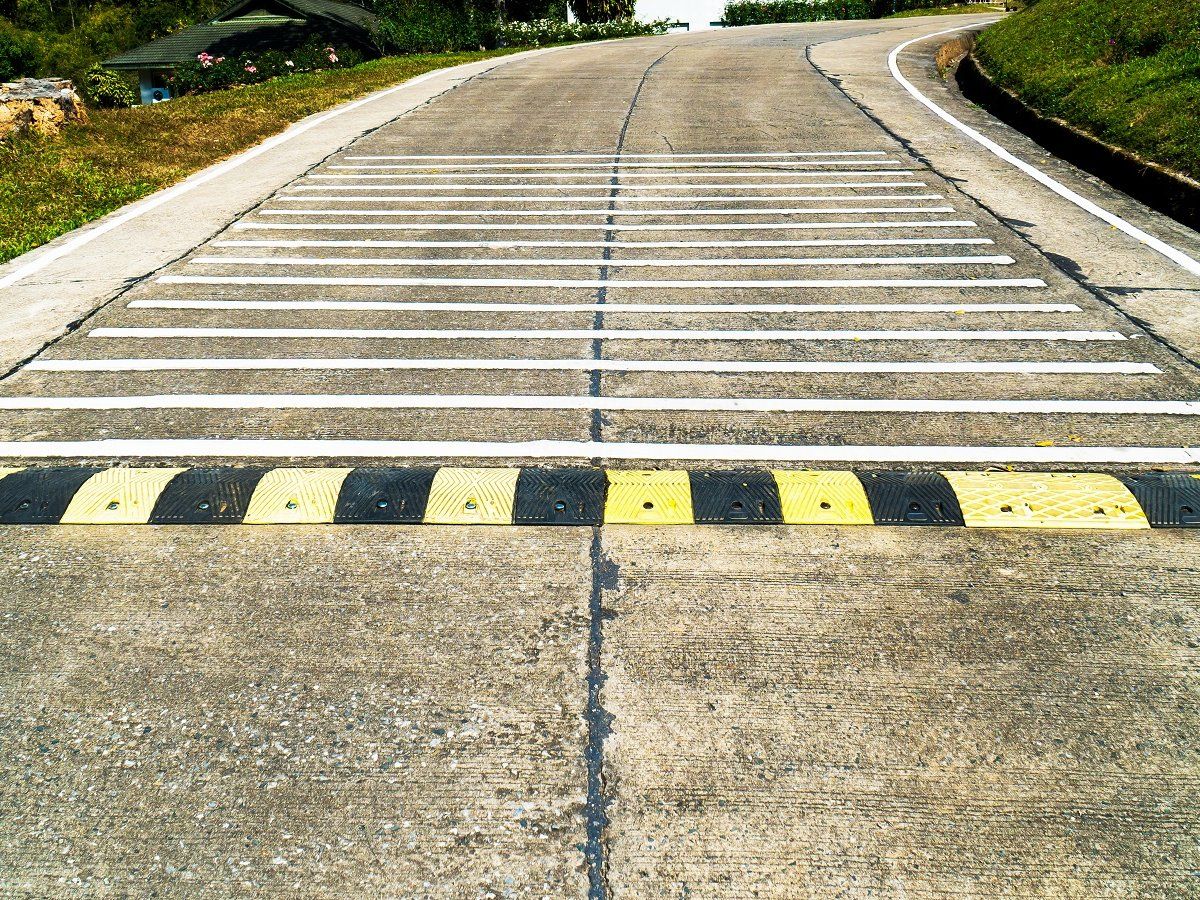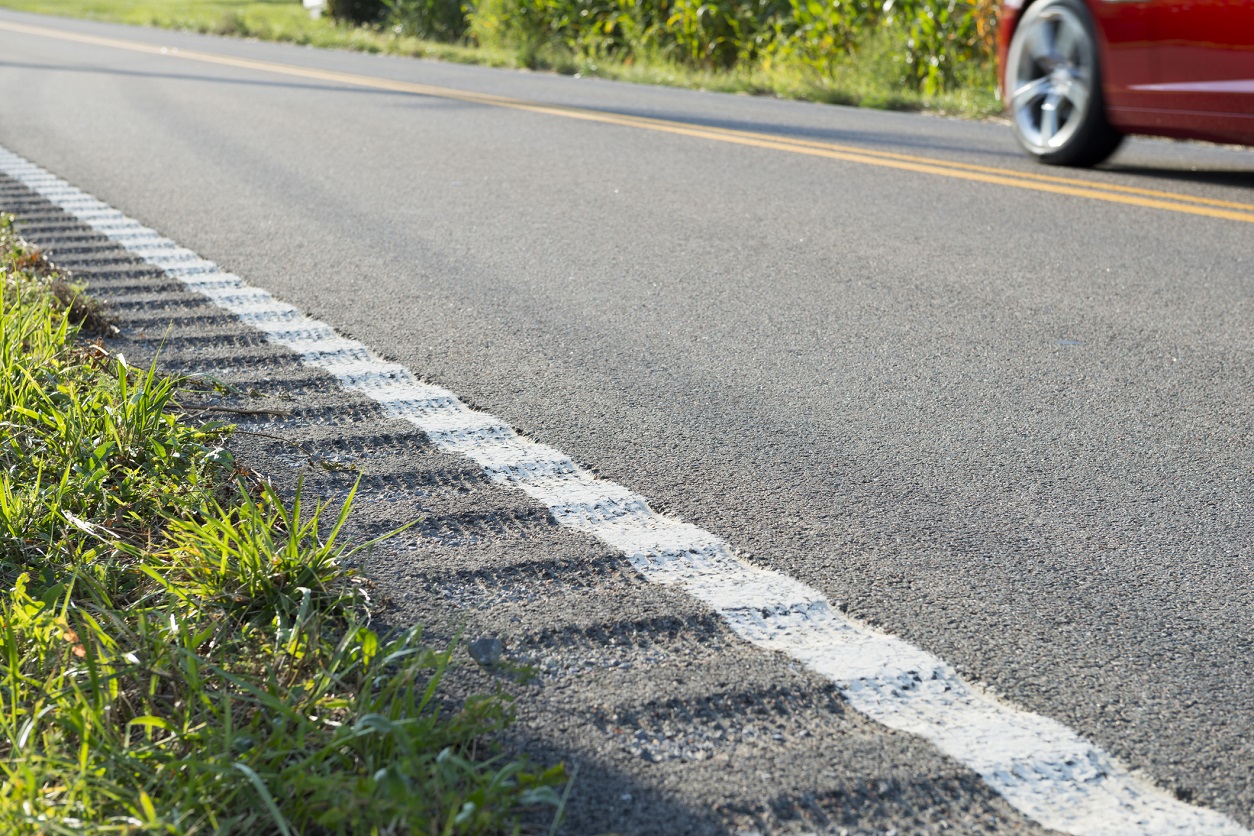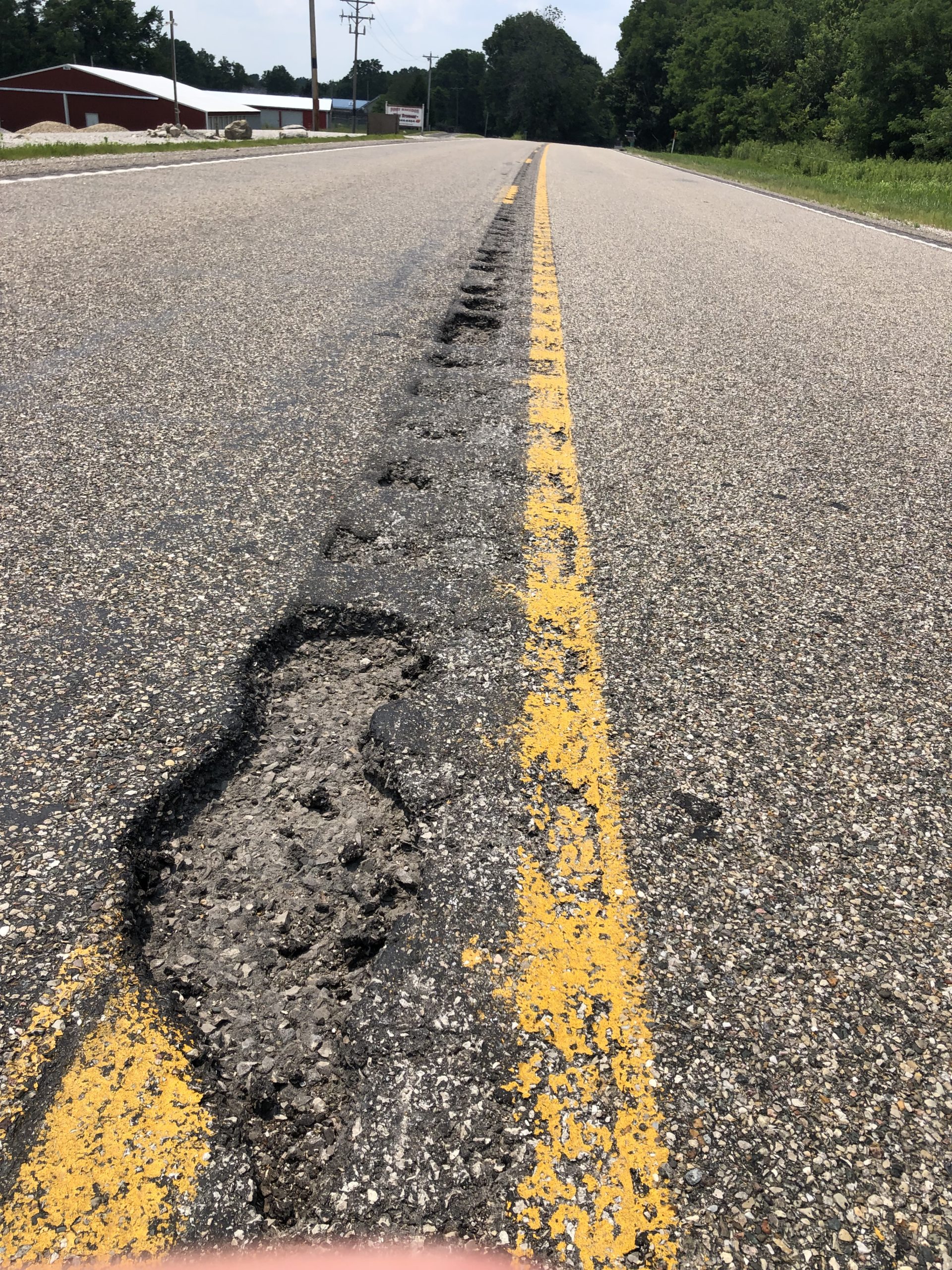Have you ever driven on a highway and felt your car abruptly shake as you crossed a series of bumps? That's likely due to rumble strips! These simple yet effective road features are designed to alert drivers when they’re veering off course. By creating a distinctive sound and vibration, rumble strips serve a pivotal role in enhancing road safety. Let's dive in and explore what
What Are Rumble Strips?

Rumble strips are textured grooves or raised patterns found on the edges or centerlines of roadways. They are designed to provide auditory and tactile feedback to drivers, encouraging them to potentially correct their driving behavior. They come in different forms, primarily categorized as:
- Shoulder Rumble Strips: Placed on the roadside to warn drivers who might be drifting off the pavement.
- Centerline Rumble Strips: Installed along the center of two-way roads, helping to prevent head-on collisions.
- Warning Rumble Strips: Located before intersections or other hazards to alert drivers of a change in road conditions.
When a vehicle rolls over rumble strips, it creates a noticeable vibration and sound, which activates the driver's alertness. This feature is especially useful during nighttime or inclement weather conditions when visibility is compromised.
They’re generally constructed from materials like asphalt, concrete, or thermoplastic, making them durable yet effective. Rumble strips not only serve their primary purpose of safety but can also reduce the likelihood of costly accidents. According to some studies, they can decrease run-off-road crashes by as much as 50%!
In summary, rumble strips are a vital road safety measure that significantly contributes to reducing accidents and promoting safer driving habits. Next, let’s explore how these strips produce their distinctive sounds and vibrations!
How Do Rumble Strips Function?

Rumble strips are fascinating road safety features designed to alert drivers when they are straying from their lane or veering off the road. But have you ever wondered how they actually work? Well, let’s break it down!
Typically, rumble strips are installed on highways and around curves in the road. Their primary function is to provide a tactile and auditory warning. Here’s how they do it:
- Textured Surface: Rumble strips are made up of a series of grooves or undulating patterns etched into the asphalt or attached as a separate feature. When a vehicle drives over these textured areas, the tires interact with the surface in a way that creates a noticeable vibration.
- Installation Locations: You usually find them on the shoulders of highways, at intersections, and sometimes in construction zones. This strategic placement helps catch the attention of distracted drivers effectively.
- Vibration Feedback: When your car tires hit these grooves, the uneven surface generates vibrations that travel through the steering wheel and into the driver’s hands, prompting an immediate reaction.
- Auditory Alert: The vibrations are accompanied by a low rumbling or buzzing noise, adding an auditory dimension to the warning signal. This dual alert system is crucial for ensuring that even distracted drivers get the message.
In essence, rumble strips utilize both tactile and auditory sensations to provide a comprehensive warning, helping keep everyone safer on the road.
The Sound Production Mechanism of Rumble Strips

Now, let’s dive into the nitty-gritty of how rumble strips produce sound. It’s quite interesting how something so simple can create an impactful auditory cue!
When vehicles roll over rumble strips, the process of sound production involves several key elements:
- Air Compression: As the tires come into contact with the raised sections of the rumble strip, air is compressed in the grooves. This rapid compression and release create vibrations that generate sound waves.
- Frequency of Vibration: Rumble strips are designed with specific widths and depths to optimize the frequency of the vibrations. Usually, the deeper and wider the grooves, the more pronounced the sound. These parameters are critical for producing a sound that is loud enough to capture attention.
- Material Influence: The materials used in the construction of both the road and the rumble strips also play a significant role in sound production. For example, concrete and asphalt can yield different sound qualities due to their density and texture.
- Vehicle Speed: Interestingly, the speed of the vehicle also affects the sound produced. Faster vehicles generate a more significant sound due to the increased tire engagement and air displacement.
This unique combination of factors ensures that rumble strips produce a loud, distinct sound that alerts drivers, effectively serving their primary purpose of enhancing road safety. So, the next time you're cruising down the highway, just remember the science behind that rumbling sound!
5. Types of Rumble Strips
When it comes to rumble strips, they aren't all created equal! There are several types designed for specific uses and conditions. Understanding these can really shed light on their purpose and effectiveness. Here are the main types:
- Transversal Rumble Strips: These are often found on highway shoulders or at intersections. They run perpendicular to the direction of traffic and create a vibration and noise when a vehicle drives over them, alerting the driver to potential hazards.
- Longitudinal Rumble Strips: Unlike transversal ones, these run parallel to the road. They can be found in highway lanes or shoulders and serve to warn drivers if they are veering out of their designated space.
- Refuge or Centerline Rumble Strips: Placed in the center of two-way roads, these strips help prevent head-on collisions by alerting drivers when they cross the center line, potentially preventing dangerous situations.
- Avenue Rumble Strips: Typically located on rural roads or areas with lower traffic volume, these strips help in alerting drivers about sharp turns, animal crossings, or other roadway hazards.
- Customized Rumble Strips: Some locations use specific designs or materials to suit unique road conditions or local needs. These can include different shapes or acoustic properties to maximize effectiveness.
Each type serves a specific purpose, but they all share the common goal of enhancing road safety through sound and vibration. It’s fascinating how these simple designs can make such a significant impact!
6. The Importance of Noise in Safety
Noise on the road might not always be welcome, but when it comes to rumble strips, it plays a crucial role in safety. Here's why noise is fundamental:
- Alerting Drivers: The sound produced by rumble strips is like a wake-up call for drivers, especially those drifting out of their lane. This auditory cue can snap someone back to attention faster than visual cues alone.
- Enhancing Awareness: While driving, many distractions can pull attention away from the road. The sudden noise created by running over rumble strips can significantly boost a driver’s situational awareness.
- Reducing Collisions: According to statistics, roads with rumble strips experience fewer accidents. The combination of sound and vibration helps prevent fatigued or distracted drivers from veering off-course.
- Signaling Different Conditions: Different patterns or designs of rumble strips can signal varying levels of caution; for instance, deeper cuts may indicate a dangerous turn ahead.
In essence, the sound generated by rumble strips is like a reliable friend reminding drivers to stay alert. So, next time you hear that familiar rumble, remember it’s more than just noise; it’s a vital safety feature helping ensure everyone makes it home safely!
7. Environmental Impact and Concerns
Rumble strips have their benefits, but it's essential to also consider their environmental impact. While they serve a critical function in road safety, some concerns have emerged regarding their effects on wildlife, noise pollution, and surrounding ecosystems.
Firstly, noise pollution is one of the most noticeable outcomes of using rumble strips. When vehicles pass over these textured strips, they produce a distinctive sound that can be unsettling. This sound can affect nearby residential areas, disrupting the peace and quiet typically enjoyed by homeowners. Here’s a quick breakdown of potential noise impacts:
- Increased overall noise levels in nearby communities.
- Potential health issues related to prolonged exposure to high noise levels.
- Affects the restful environment that residents cherish.
Moreover, the interaction between vehicles and rumble strips can also have implications for wildlife. Many animal species rely on sounds for communication and navigation, and the introduction of rumble strips could disrupt these natural behaviors. Some key risks include:
- Altered migration patterns for certain animals.
- Increased mortality rates due to sudden disturbances.
- Long-term effects on local biodiversity.
Lastly, the environmental footprint of installing and maintaining rumble strips should not be overlooked. The materials used and the machinery needed for installation can lead to habitat disruption. It’s crucial for planners and engineers to assess these potential environmental impacts thoroughly and consider more eco-friendly alternatives whenever possible.
8. Conclusion
To wrap it all up, rumble strips are a fascinating intersection of engineering, safety, and environmental stewardship. Their ability to alert drivers to potential hazards significantly reduces the risk of accidents, making them invaluable tools on our roads. Their sound serves as a reminder to stay alert, driving home the importance of attentiveness while behind the wheel.
However, like most solutions, they’re not without their drawbacks. The associated noise pollution and potential impacts on wildlife deserve thoughtful consideration. Striking a balance between ensuring road safety and minimizing our environmental footprint is crucial. Highway departments and local governments are called to action here, finding innovative methods to enhance safety without compromising the health of our ecosystems.
As we continue to innovate in road safety technologies, let’s aim for solutions that serve both people and nature effectively. After all, a safer road should also be a healthier environment for everyone.










